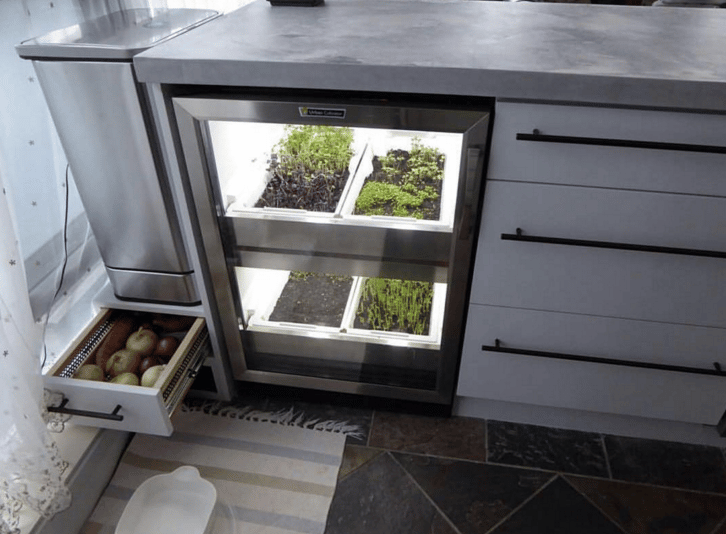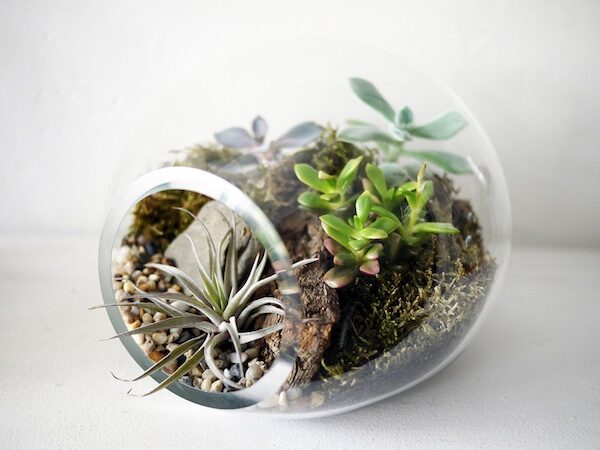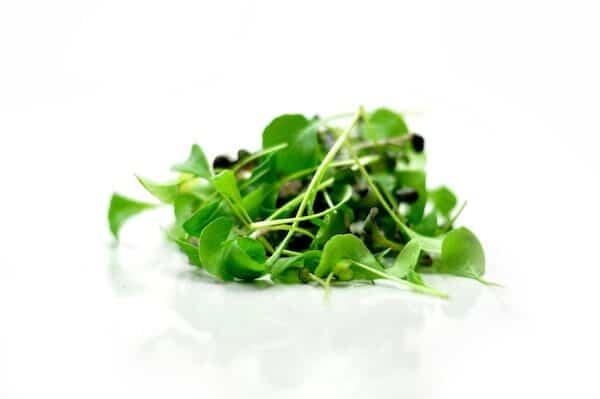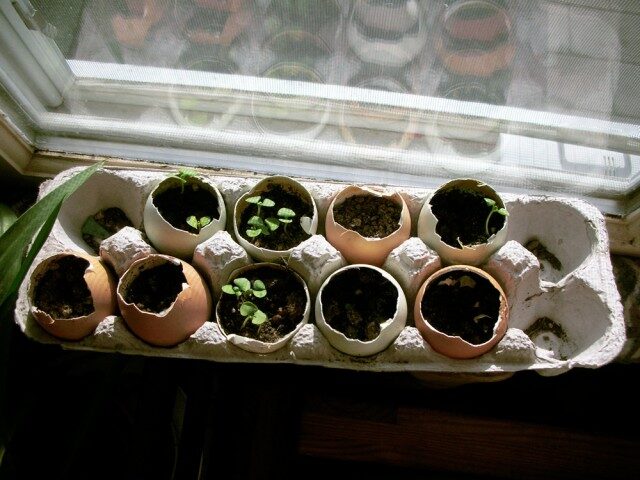
Tips & Tricks
15 Mar Here’s What Everyone Should Know About Growing Your Own Greens
From Gusto TV, by The Food Gays As recipe developers, working with beautiful, fresh herbs and microgreens just makes our job easier. And with spring just around the corner, you’ll want to step up your own gardening game — especially if you want to add extra fresh greens to your own food. So get the most out of your homegrown herbs and other microgreens by following these must-know tips and facts.12 Jun Build a Terrarium for Some Freshness
Cost of housing is increasing every year while the spaces get smaller and smaller. These smaller spaces are forcing us to come up with novel ways to make the most of what we've got. One thing that many people end up sacrificing because of this is indoor gardening. But a little bit of green can go a long way, from producing fresher air, to just having something beautiful and green in your home. A good alternative to indoor gardening is the terrarium. These are self-contained gardens that use glass homes and ultimately produces its own climate to grow. The best thing about terrariums is that they are completely customizable, and you can decorate it so that it fits to your aesthetic completely. Want little toy dinosaurs to rule your terrarium? No problem. Want it as minimal as possible so that the greens are the star of the show? That'll look great, too. Here's how you can build a terrarium for your home.30 Jun Beat the Heat: Here’s How to Stay Cool in Hot Weather
We're quickly rolling into the month of July, and judging by the way that things are going, it's going to be a scorcher this summer. While hot weather is nice, and you've never looked better than with that killer tan, it's crucial to know how to keep yourself cool. Heat stroke—or worse, hyperthermia—are very real things. When your body produces way too much heat, or absorbs way too much heat, it can cause some serious damage. Without further ado, here are some tips on how you can keep yourself cool, even when it's heating up.01 May How to Pack a Fresher, Healthier Lunch
One of the biggest hurdles of everyday life is food prep. With school, or kids, or work, by the end of the day, food prep is one of the last thing you want to be thinking about. With a little bit of discipline, though, having a solid lunch can really make a difference for your workday. In addition to ensuring that you're getting all the nutrients you need to stay healthy, you'll also feel better after fuelling yourself with the proper food. Here are some tips and recipes to help you beat that mid-day hump and 3 o'clock wall!06 Feb How to Prepare Your Garden For Spring Planting
Spring is such an exciting time; it's an excuse to start fresh. Why not make good use of this time and start to expertly prepare your garden for spring? Here are a few tips for getting the best jump start on spring gardening.14 Nov How to Prepare Your Perennial Plants for Winter
You can buy holiday gifts and cards ahead of time, you can keep your eyes on the prize and plan ahead for the big holiday dinner. But one thing you must do this winter is prepare your garden for the incoming cold. Why is it so important to prepare your plants? The roots of your plants have the ability to become well established during the winter—in cold, moist weather.26 Sep How Do Urban Cultivator-Grown Microgreens Compare to Store-Bought Microgreens?
Time and again, we've talked about how microgreens, vegetables, herbs, and flowers grown in an Urban Cultivator blow store-bought produce right out of the water, but how do they really compare? So, we decided to conduct an experiment to show you. We went to a local supermarket chain that specializes in natural and organic foods and picked up some produce to check out the competition. There wasn't a whole lot available in terms of selection, so we purchased arugula microgreens, pea shoot microgreens, and a box of mixed micros. The three small boxes cost just under $20. Here's what we found when we put store-bought microgreens next to with those purchased at a grocery store.19 Sep How to Start Seedlings Indoors
There's nothing like the feeling of growing your own food. Seeing the labor of your hard work literally bear fruit (or vegetables, or leaves, or…) is incredibly satisfying, not to mention delicious. Not only are you providing for your family nutritious, pesticide-free greens, but you're also reducing your carbon footprint by eliminating the unnecessary environmentally-damaging steps of mass food production and delivery. One of the most challenging hurdles of growing your own is right at the beginning—when you're starting from seedlings. At their most delicate stage, your plants are incredibly vulnerable to rotting and soil-borne diseases. Luckily, with the right knowledge, you can successfully grow delicious vegetables and herbs. Here's our guide to starting seedlings indoors.08 Aug 6 Ideas For the Perfect Indoor Garden
Weather in many places can be incredibly finicky, so the best thing for some is to garden indoors instead. While it may seem daunting to bring everything inside, indoor gardening is really as simple as gardening outdoors, with the added benefit of being able to spruce it up with stylish designs. Not sure where to start? Here are some tips and ideas for the perfect indoor garden.- 1
- 2










